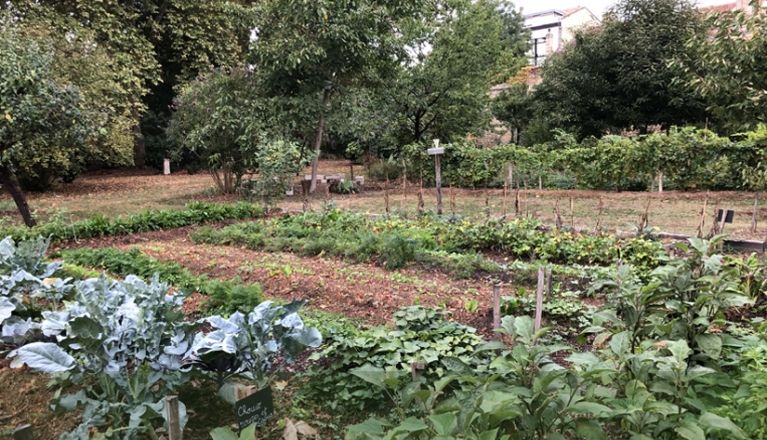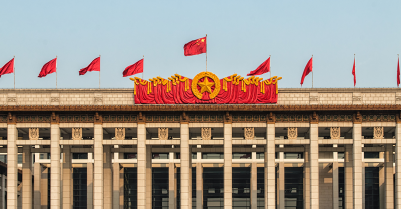-
View article
 #Economy
#EconomyChina: confidence, price war and credibility are the watchwords in this early part of the year
2024/03/26
- #Agri Food
- 2020/09/22
- 0
-
4
Urban farming: fact or fiction?
The twentieth century brought increasing urbanisation, with more and more people living in cities far from where their food is produced. Yet even as links between cities and the countryside become ever looser, the number of urban farming initiatives is growing steadily and there has never been such an intense spotlight on all that is “local”. Urban and suburban farming is commonly defined as the production of fruit, vegetables, and other foodstuffs in towns and cities: it can be done at home, in shared vegetable gardens or in urban farms on rooftops or in controlled environments (indoor or vertical farming).

High-tech vertical farming is expanding in Asian and North American urban centres
Having begun to appear in the 1980s, notably in Japan, vertical farms have been the subject of renewed interest in recent years as technological advances have made them more efficient. Built on the promise of being able to mass-produce high-quality foodstuffs at sustainable prices at any time and as close to consumers as possible, the most cutting-edge companies in this area have been able to raise substantial funding: for example, Aerofarm, based in New York, has raised a total of $240 million since it was formed, while California-based Plenty has raised over $400 million.
Progress in lighting (LED lamps), robotics and Big Data has led to the emergence of multi-tier production units for the intensive cultivation of vegetables, and particularly salad vegetables. These vertical farms use controlled and automated cultivation spaces that enable them to do without natural light and free them from the constraints of the outdoor environment (known as “deseasonality”). However, scientific promises aside, none of these vertical farming projects has really yet reached full maturity.
France: less radical projects and a more social approach
In an event that went unnoticed in April, the first phase of a 14,000 square meter urban farm – touted as Europe’s biggest – was completed on the roof of Paris’s Porte de Versailles exhibition centre. Its goal is to produce over 300 metric tons of fruit and vegetables (strawberries, salad vegetables, etc.) a year. Less iconic than the Porte de Versailles project, in February Agricool officially opened its first urban farm consisting of ten containers in La Courneuve: plants (strawberries, herbs) are grown vertically in a controlled environment, albeit at a scale far removed from that seen at American and Asian facilities.
In France, though, urban farming is not just a business: it also plays a social role. Among the arguments put forward by urban farming projects – frequently with local authority backing – is their potential to reconnect young people and urban environments with nature. For example, Saint-Denis city council has contracted La Ferme de Gally to cultivate just under five acres of council-owned land as a market garden, with a target of attracting 150,000 visitors a year. Such projects are also an opportunity to redevelop brownfield sites and other sites that have lost their purpose, such as the former nationally important market in Nantes where Agronaute, Nantes’ first urban market, opened in 2019.
Moreover, this is the approach adopted in the government’s recovery plan: the “agricultural transition” component explicitly calls for a focus on developing urban farming as a driver of social and environmental progress.
A tricky economic equation and limited yields
It’s no accident that the first urban farms came into being in Japan, where the shortage of available land has driven the development of vertical farming solutions. However, despite technological advances, there remain barriers that prevent such projects from achieving economic equilibrium.
First of all, the urban farming model is capital-intensive. For example, for the Porte de Versailles project, the exhibition centre’s roofs had to be reinforced to bear the farm’s weight. On a different note, the cost per square metre of vertical farms is skyrocketing: technology and automation don’t come cheap. Moreover, the use a fully controlled environment (in terms of light and temperature) makes such facilities energy-intensive, raising questions as to just how compatible they are with green energy aspirations. Another complication makes the economics hard to optimise: given the need to maximise the available vertical space, vertical farms are best suited to growing small vegetables. They most commonly produce salad vegetables and herbs, as is the case of the farm set up by German company Infarm in a Metro warehouse in Nanterre. Lastly, the acceptability of vertically grown crops to end consumers is not confirmed: it goes against the more natural, less intensive farming called for by a section of the population.
For some projects with a clearer social purpose, economic profitability is relegated to second place: projects are supported by some form of start-up subsidy or guaranteed market outlets that enable them to operate efficiently.
So, while urban farming is once again becoming a reality, the extent to which it can help meet urban food requirements needs to be seen in proper perspective: it will remain marginal in terms of both the variety and the quantity of crops produced. However, funds invested in recent years could well enable vertical farming to move into an era of true mass production by removing the remaining technological barriers and helping it achieve economic profitability.
Arnaud Rey
arnaud.rey@credit-agricole-sa.fr










